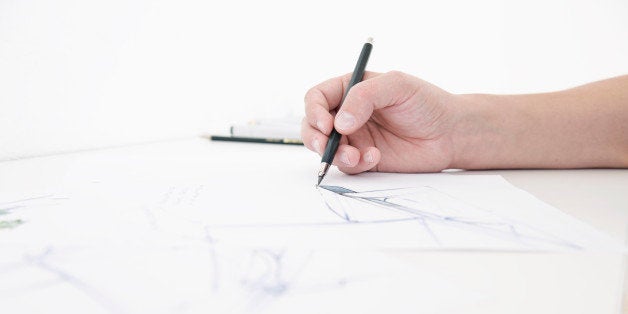
"I know how to draw, but I can only draw things that I can see. I draw from photographs that I find on the Internet. However, I have difficulty drawing from my imagination, and this bothers me because I want to be able to create images on my own. How can I learn to draw from my imagination?"
To successfully draw from your imagination, you have to be skilled in drawing from direct observation. I am appalled that so few art students draw from life nowadays. Many young artists don't draw from life because drawing from photographs is extremely convenient, doesn't require a lot of thought, and gets quicker results. By comparison, drawing from life is much more challenging and time-consuming, but ultimately it is the approach that will provide the necessary skills to draw from any reference.
For an art student, drawing exclusively from photographs is the worst approach to take. As a college professor, I invest a lot of time getting first year students to unlearn bad drawing habits they developed because they only drew from photographs. Frequently, the students who have a lot of drawing experience, but who have bad habits, have a much tougher time than the students who have no drawing background. Drawing exclusively from photographs encourages these poor habits:
1. Obsessively laboring one drawing for several weeks.
Consequently, students become accustomed to working at a very slow pace. For anyone who aspires to be a professional artist, this approach is inefficient and unsustainable. Students become precious about every drawing they make, which sets up an impossible expectation that every drawing must be successful. They are so afraid of making a bad drawing that they refuse to try anything new. This severely limits growth and keeps them from expanding their abilities.
2. Being unable to do 2-5 minute gesture drawings.
Gesture drawing is a key principle in all aspects of drawing, it teaches you how to quickly capture the essential spirit of your subject with energy and movement. Drawing from photographs trains people to draw in a very tight manner, which results in drawings that lack vitality.
3. Ignoring fundamental structures and focusing only on details.
The details of a drawing are usually what impress viewers the most; they are the glamorous part of a drawing that seduce and dazzle. However, no amount of detail will compensate for poor compositions and structures. Drawings that invest too much time on details will appear flat and superficial.
Drawing is about much more than copying an accurate representation of what you see. Throughout history, the most pivotal drawings have been images that a photograph could never make. When an artist draws, they are offering an artistic interpretation of what they have experienced. A drawing copied verbatim from a photograph provides no individual opinion; the process just mechanically replicates what the photograph already said. At that point, there's no point to making the drawing, you're just making a bad xerox of the photograph.
Drawing from life is wonderful because you get to fully experience your subject. Compare the difference between drawing from a photograph of a person and drawing that person in real life. If you draw from direct observation, you would get to talk to the person, hear their voice, and learn about their personality. All of these aspects of the person that you experience will vastly influence your drawing process.
Many students aspire to create the illusion of depth within the two-dimensional format of a drawing. It's counterproductive to try to achieve a convincing three-dimensional illusion in your drawing if your reference is a two-dimensional photograph. You have to directly experience three-dimensional space and form in person. As a student, I studied Gothic cathedrals and looked at slides in class and photographs in textbooks. I eventually traveled to France to see the cathedrals, and was astonished by the vast depth of space. Being physically immersed in the cathedral, I was able to capture the mood of the space in my on site drawings.
You have complete creative control when drawing from direct observation. If you're drawing a still life, you can arrange the objects any way you want and create a specific lighting situation. With a portrait, you can choose from multiple perspectives or ask the model to sit in a specific position. This allows for much more flexibility and significantly increases all of the visual possibilities.
This is not to say that you should never ever draw from a photograph, as there are instances where using a reference photograph is necessary. In those circumstances, I always shoot my own photographs so that I can control every factor. If I need an image of a gorilla, it means a trip to the zoo. I see all reference photographs as raw material that I will manipulate and transform through my drawing process. The only time I would draw from someone else's photograph is if I really need an image that is literally impossible for me to photograph on my own. Even then, I only use fragments of the photograph and I mix it in with other references. I would never take someone's photograph and draw a precise copy of it.
Drawing from life involves a lot of work and patience, but eventually it will reap many rewards. You will gain a comprehensive understanding of the mechanics of light and shadow, see how structures are organized, understand how forms interact within a space, learn how to articulate textures, and much more. This knowledge will equip you with the skills you need in order to draw from your imagination. From there, it's a matter of extensive experimentation and practice to see what works for you.
Ask the Art Professor is an advice column for visual artists. Submit your questions to clara(at)claralieu.com

